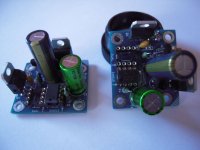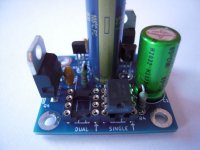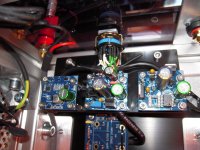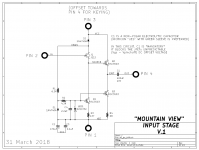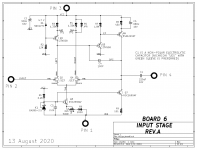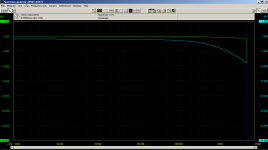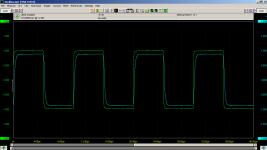@EUVL
thanks, how stable is the DC offset at the output? Many cards use the blocking cap as precaution.
thanks, how stable is the DC offset at the output? Many cards use the blocking cap as precaution.
Would the heatsinks from a Halfler DH220 be large enough for this amp ?
I think so - I use a slim 2U esque chassis and it runs hot (55-60deg). I have a DH220 at home and just gauging the heatsink size / radiation, I think it would be OK. = very scientific work there ..dB
> how stable is the DC offset at the output?
Compound vs Darlington
> Many cards use the blocking cap as precaution.
Whatever you think appropriate.
All I show you is an example, not holy bible.
Patrick
Compound vs Darlington
> Many cards use the blocking cap as precaution.
Whatever you think appropriate.
All I show you is an example, not holy bible.
Patrick
@EUVL
dude, I _need_ holy bible, single canon not open interpretation if possible. Something I can build and listen to. I am just an audiophile with old ears and poor attention span. 😀😀😀
dude, I _need_ holy bible, single canon not open interpretation if possible. Something I can build and listen to. I am just an audiophile with old ears and poor attention span. 😀😀😀
IPS6/IPS7 first listening
Hello M2X-builders,
I stuffed the IPS7- boards.
Put the IPS6- and IPS7-boards into the amp and gave them a first listening. 😀
First impression: they both sound really; really good! I think these boards are very 'unnoisy (compared to Mountainview)'. Seems this was one of the 'aims' of Mark? 😕
I think this is the reason why Mark has chosen the Zetex ZTX558 as a CCS on the IPS6 - board? 🙄 And it shows me again what a good job the J113s can do...
I have to listen more to give a real statement on the sound. Although these are 'buffers' and they shouldn't 'sound'. But they do....
Well done Mark! Thanks!
Greets
Dirk
Hello M2X-builders,
I stuffed the IPS7- boards.
Put the IPS6- and IPS7-boards into the amp and gave them a first listening. 😀
First impression: they both sound really; really good! I think these boards are very 'unnoisy (compared to Mountainview)'. Seems this was one of the 'aims' of Mark? 😕
I think this is the reason why Mark has chosen the Zetex ZTX558 as a CCS on the IPS6 - board? 🙄 And it shows me again what a good job the J113s can do...
I have to listen more to give a real statement on the sound. Although these are 'buffers' and they shouldn't 'sound'. But they do....
Well done Mark! Thanks!
Greets
Dirk

Attachments
There are three constant current sources on the IPS6 schematic: Q1, Q3, and Q7.
Several factors were considered when choosing specific device types for each position, including the prevalence of counterfeit devices (if an unwise builder decides to save a dollar by purchasing transistors from eBay or Tayda instead of Mouser).
If you want to compare IPS6 to MountainViewIPS, let me call your attention to the bias networks at the lower left in each schematic diagram. MountainView has a double-regulated bias network: R1-D1 is the first regulator, and R2-LED1 is the second regulator. On the other hand, poor old IPS6 only has a single-regulated bias network: R1-IC1.
For those who prefer the sound of MountainView over the sound of IPS6, now you have a "reason" you can point to, triumphantly. Double regulated bias! Oh baby.
And for those who prefer the sound of IPS6 over the sound of MountainView: you'll just have to say "high output impedance transconductance amplifier driving transformer primary, gives excellent sonic results."
_
Several factors were considered when choosing specific device types for each position, including the prevalence of counterfeit devices (if an unwise builder decides to save a dollar by purchasing transistors from eBay or Tayda instead of Mouser).
If you want to compare IPS6 to MountainViewIPS, let me call your attention to the bias networks at the lower left in each schematic diagram. MountainView has a double-regulated bias network: R1-D1 is the first regulator, and R2-LED1 is the second regulator. On the other hand, poor old IPS6 only has a single-regulated bias network: R1-IC1.
For those who prefer the sound of MountainView over the sound of IPS6, now you have a "reason" you can point to, triumphantly. Double regulated bias! Oh baby.
And for those who prefer the sound of IPS6 over the sound of MountainView: you'll just have to say "high output impedance transconductance amplifier driving transformer primary, gives excellent sonic results."
_
Attachments
Last edited:
Black Forest Buffer Proto
Just for my own curiosity, I played around with the BFB proto further today.
Firstly, what happens without load ?
Nothing.
Both square wave and frequency response is the same as 600R load.
The bandwidth is determined by the input RF filter, and not by the buffer itself.
How about DC drift ?
On cold start, DC was +1.2mV. After 2 minutes it was -1.0mV.
After 5 minutes, it was 0.0mV +/-0.3mV.
I used nominal-value resistors throughout without any trimming (1% metal film).
JFETs Idss are 3.53mA & 3.51mA.
Hfe for the BJTs were 222 & 200, not perfectly matched.
Maybe just luck. 😉
Cheers,
Patrick
.
Just for my own curiosity, I played around with the BFB proto further today.
Firstly, what happens without load ?
Nothing.
Both square wave and frequency response is the same as 600R load.
The bandwidth is determined by the input RF filter, and not by the buffer itself.
How about DC drift ?
On cold start, DC was +1.2mV. After 2 minutes it was -1.0mV.
After 5 minutes, it was 0.0mV +/-0.3mV.
I used nominal-value resistors throughout without any trimming (1% metal film).
JFETs Idss are 3.53mA & 3.51mA.
Hfe for the BJTs were 222 & 200, not perfectly matched.
Maybe just luck. 😉
Cheers,
Patrick
.
Attachments
Further information ...
Maybe I'm exaggerating, because the noise can only be heard with the ear in the speaker, but I want to catch up with those who have silence in the speakers.
The amplifier connected to the preamplifier is ... quieter. Not much, but 100hz and 200hz have disappeared. 150hz remained at the same level.
Anyone have any ideas?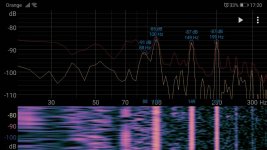
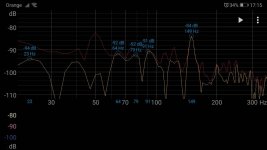
Maybe I'm exaggerating, because the noise can only be heard with the ear in the speaker, but I want to catch up with those who have silence in the speakers.
The amplifier connected to the preamplifier is ... quieter. Not much, but 100hz and 200hz have disappeared. 150hz remained at the same level.
Anyone have any ideas?


Hello M2X-builders,
I stuffed the IPS7- boards.
Put the IPS6- and IPS7-boards into the amp and gave them a first listening. 😀
First impression: they both sound really; really good! I think these boards are very 'unnoisy (compared to Mountainview)'. Seems this was one of the 'aims' of Mark? 😕
I think this is the reason why Mark has chosen the Zetex ZTX558 as a CCS on the IPS6 - board? 🙄 And it shows me again what a good job the J113s can do...
I have to listen more to give a real statement on the sound. Although these are 'buffers' and they shouldn't 'sound'. But they do....
Well done Mark! Thanks!
Greets
Dirk
Do yourself a huge favor and ditch the OPA for an LM49720 in the IPS7.😀😀
As a unity gain buffer OPAs family seems very dark with overly exaggerated bass and poor imaging. Unless you have a vintage ribbon tweeter bookshelf speaker that needs freq response 'rebalancing' I would avoid.
Listening to my just finished Cedarburg daughter cards. Wow! I have built several cards now, including both the other DIP OpAmp cards. This set is my favorite so far.
In my system, the correct balance of delicate, precise, and a touch of lush. Sounded great with Deadmau5, Nora En Pure, Steve Martin, Laurence Blatt, Dire Straights, Norah Jones, Nickel Creek, and still working on others. Bass was sharp, precise, and well weighted in the electronic tracks.
Monoblocks with Fairchild Mosfets. Daedalus Muse Studio speakers, in a very undersized room. (I measured 15 minutes to change both the daughter cards, and close back up)
Thanks for my new favorites Mark Johnson! Maybe it was just a fun exercise for you, they are magic in my system.
All that being said, I have extra cards (ordered the minimum 5, but they sent 7), and can offer a set of 2 and a set of 3 cards, in all their RED + ENIG glory, free for whoever wants them. I will cover postage to the continental USA.
Edit - its going to be hard dragging them out to clean the solder flux, I knew I should have cleaned them first...
In my system, the correct balance of delicate, precise, and a touch of lush. Sounded great with Deadmau5, Nora En Pure, Steve Martin, Laurence Blatt, Dire Straights, Norah Jones, Nickel Creek, and still working on others. Bass was sharp, precise, and well weighted in the electronic tracks.
Monoblocks with Fairchild Mosfets. Daedalus Muse Studio speakers, in a very undersized room. (I measured 15 minutes to change both the daughter cards, and close back up)
Thanks for my new favorites Mark Johnson! Maybe it was just a fun exercise for you, they are magic in my system.
All that being said, I have extra cards (ordered the minimum 5, but they sent 7), and can offer a set of 2 and a set of 3 cards, in all their RED + ENIG glory, free for whoever wants them. I will cover postage to the continental USA.
Edit - its going to be hard dragging them out to clean the solder flux, I knew I should have cleaned them first...
Scott Wurcer and the rest of the AD797 gang over at Analog Devices, are very good at their jobs! That's the secret of Cedarburg.
I am really looking forward to sound test of the AD797. I found there is definitely a 'house sound' to the various opamp families.
Listening to my just finished Cedarburg daughter cards. Wow! I have built several cards now, including both the other DIP OpAmp cards. This set is my favorite so far.
In my system, the correct balance of delicate, precise, and a touch of lush. Sounded great with Deadmau5, Nora En Pure, Steve Martin, Laurence Blatt, Dire Straights, Norah Jones, Nickel Creek, and still working on others. Bass was sharp, precise, and well weighted in the electronic tracks.
Monoblocks with Fairchild Mosfets. Daedalus Muse Studio speakers, in a very undersized room. (I measured 15 minutes to change both the daughter cards, and close back up)
Thanks for my new favorites Mark Johnson! Maybe it was just a fun exercise for you, they are magic in my system.
All that being said, I have extra cards (ordered the minimum 5, but they sent 7), and can offer a set of 2 and a set of 3 cards, in all their RED + ENIG glory, free for whoever wants them. I will cover postage to the continental USA.
Edit - its going to be hard dragging them out to clean the solder flux, I knew I should have cleaned them first...
Wow! I am running Ishikawa and it sounds really good. Maybe even great. Austin-unused, #7 just finished, #6 parts and boards in hand, Cedarburg boards in hand and parts in transit.
Guess I may as well cut to the chase and install Cedarburg next. I get the feeling Austin will never be heard. Poor little guys. Oh well....
Don
There are lots of DIP-8 opamps sold by Analog Devices; those who wish to test the "house sound" hypothesis could try the AD817, AD744, AD843, and AD847. Either in the Tucson daughter card, or the IPS7 daughter card.
Tons of people here on diyAudio praise the AD825 to high heaven, even though it comes in an SOIC-8 (surface mount) package. Luckily, SparkFun will sell you a cheap adapter board LINK that lets you plug an AD825 into a DIP8 socket.
Tons of people here on diyAudio praise the AD825 to high heaven, even though it comes in an SOIC-8 (surface mount) package. Luckily, SparkFun will sell you a cheap adapter board LINK that lets you plug an AD825 into a DIP8 socket.
Just got my Sparkfun boards yesterday. Boy, are they small. Be doin that job with my x10 power mscope.
Don
PS, their service is excellent.
Don
PS, their service is excellent.
to Ryssen #4449
Hello Ake,
yes, I used a simple 4-pole / 3 position- switch. So I can switch between 3 buffer-boards.
Greets
Dirk
Hello Ake,
yes, I used a simple 4-pole / 3 position- switch. So I can switch between 3 buffer-boards.
Greets
Dirk
- Home
- Amplifiers
- Pass Labs
- The diyAudio First Watt M2x
